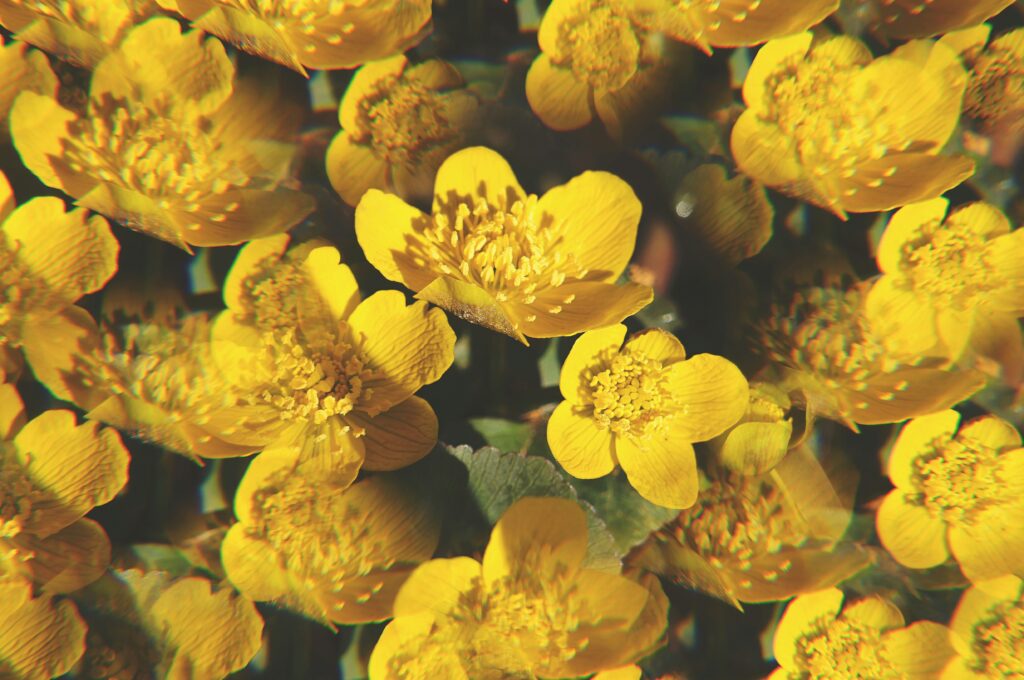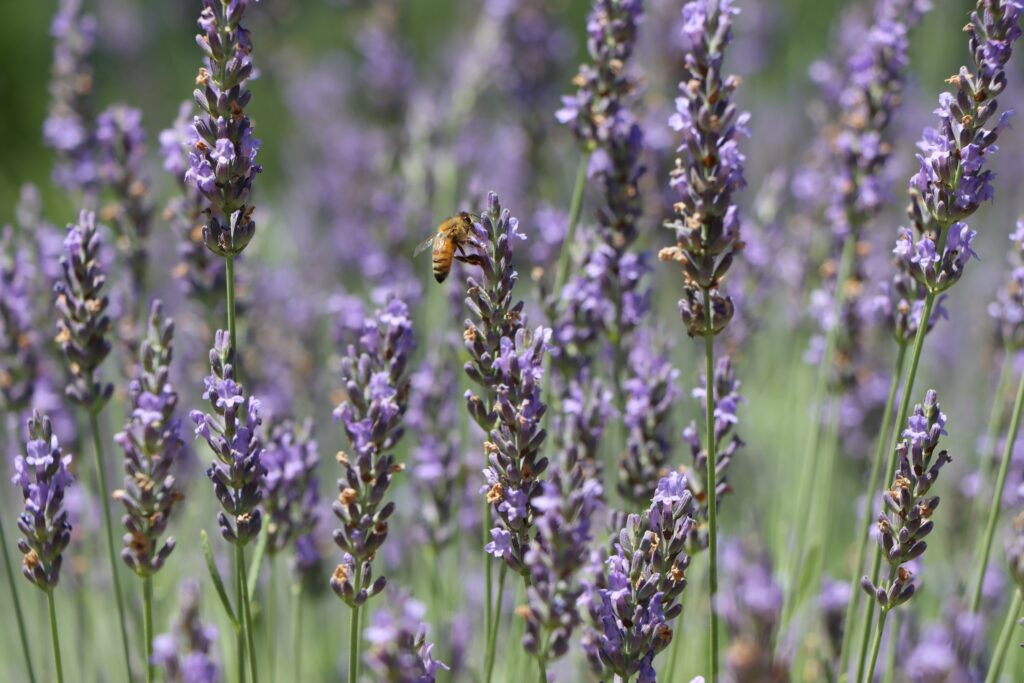Are you interested in planting a garden that looks beautiful all year round and lends a helping hand to honey bees, bumblebees and solitary bees? Let’s take a look at a plant bees love for every month of the year!
January: Snowdrop

Snowdrops are understated, pretty plants and offer a rare opportunity to see flowers in your garden over winter. Even frozen soil can’t stop them from popping up! They typically bloom in January and February, providing a chance for bees to forage when temperatures are cold.
February: Winter-flowering Clematis
These flowers are tough enough to brighten your garden throughout the winter months. They come in a variety of colours and shapes, such as blue stars, and smell just like almonds. Depending on the variety you choose, you can expect to see their flowers sometime between November and February.
March: Dandelion

Dandelions are fascinating native British flowers that have numerous benefits for humans, bees and other wildlife. Every part of the plant – the flower, seeds, leaves and root – is nutritious. One thing pollinators love about the dandelion is that it blooms in early spring before many other flowers, so this pollen-rich, nectar-rich treat is popular with all types of bee at a time when there aren’t many other options available to them.
April: Tulip
Tulips come in every colour of the rainbow! These little cups of colour with long luscious leaves are inviting to bees and bloom between March and May, ensuring provisions are available to pollinators until fruit blossoms appear.
May: Marsh Marigold

Marsh marigolds are sometimes known as ‘Mayflowers’, so expect them to be the star of the show in your garden this month. Another nickname for them is ‘Kingcup’ due to the golden colour of the flowers. Perhaps this royal association is what makes them popular with worker bees devoted to their queen.
June: Garden Strawberry
June is a great month for the garden strawberry plant: you will see both flowers and fruit at this time of year. The strawberry plant is featured on the Royal Horticultural Society’s ‘Plants for Pollinators‘ list, meaning bees will thoroughly enjoy its nectar and pollen, so you can feel virtuous while devouring your delicious home-grown strawberries.
July: Lime Tree
Okay, this would be a big ask because lime trees themselves are big, but if you have the space to grow this British native in your garden, you will see bees gleefully buzzing around. The lime tree is a beauty with heart-shaped leaves and cream-coloured flowers that are a favourite of bees, and it’s responsible for many, many jars of honey.
August: English Lavender

Blue and purple flowers are a must in a bee-friendly garden for accessibility reasons. Bees are most sensitive to these colours so they can find these plants most easily. English lavender is a delightfully aromatic choice from the mint family with dusky purple petals and greyish-green leaves.
Bonus beekeeping tip: Some beekeepers use lavender smoke when inspecting their hives with the belief that it will be extra calming. Humans find the scent of lavender relaxing so there may be something to this idea!
September: Fuchsia
A fuchsia bush can be a hotspot for bees in search of sustenance. Each plant has dozens upon dozens of little pink and purple drooping flowers, meaning several bees can access its pollen and nectar at once without the need to form a queue. Its flowering period is long, spanning summer and autumn, adding yet more appeal to this ornamental shrub for humans and pollinators alike.
October: Aster

Asters are cute little flowers from the daisy family that are still in bloom in autumn, making them a good addition to a year-round bee-friendly garden. They come in a variety of colours, including the classic white, but all of them feature the distinctive yellow centre of the common daisy.
November: Winter Beauty Honeysuckle
How could I not include HONEYsuckle? This shrub has dark branches showcasing green leaves and delicate cream flowers with an intensely sweet scent. Any bees who find themselves in search of nectar and pollen during this cold month will be grateful to encounter the winter beauty.
December: Mahonia Winter Sun

‘Winter sun’ is a lovely name for a plant, isn’t it? The bright yellow flowers of this evergreen shrub will indeed bring warmth and sunshine to your winter garden. Thankfully, it is a low maintenance plant so it won’t be necessary for you to head outdoors in the freezing cold to tend to it. But, should any bees be flying through the freezing cold, the mahonia will be ready with the food they need.
There are far more flowers and trees that pollinators love. The bees know best what they’re in the mood for and a varied diet keeps them healthy. One of the easiest ways to create a bee-friendly garden is to rewild your outdoor space. If you’d rather not relinquish control and you’re looking for a simple, concise rule to follow when planting, remember: variety is everything.
